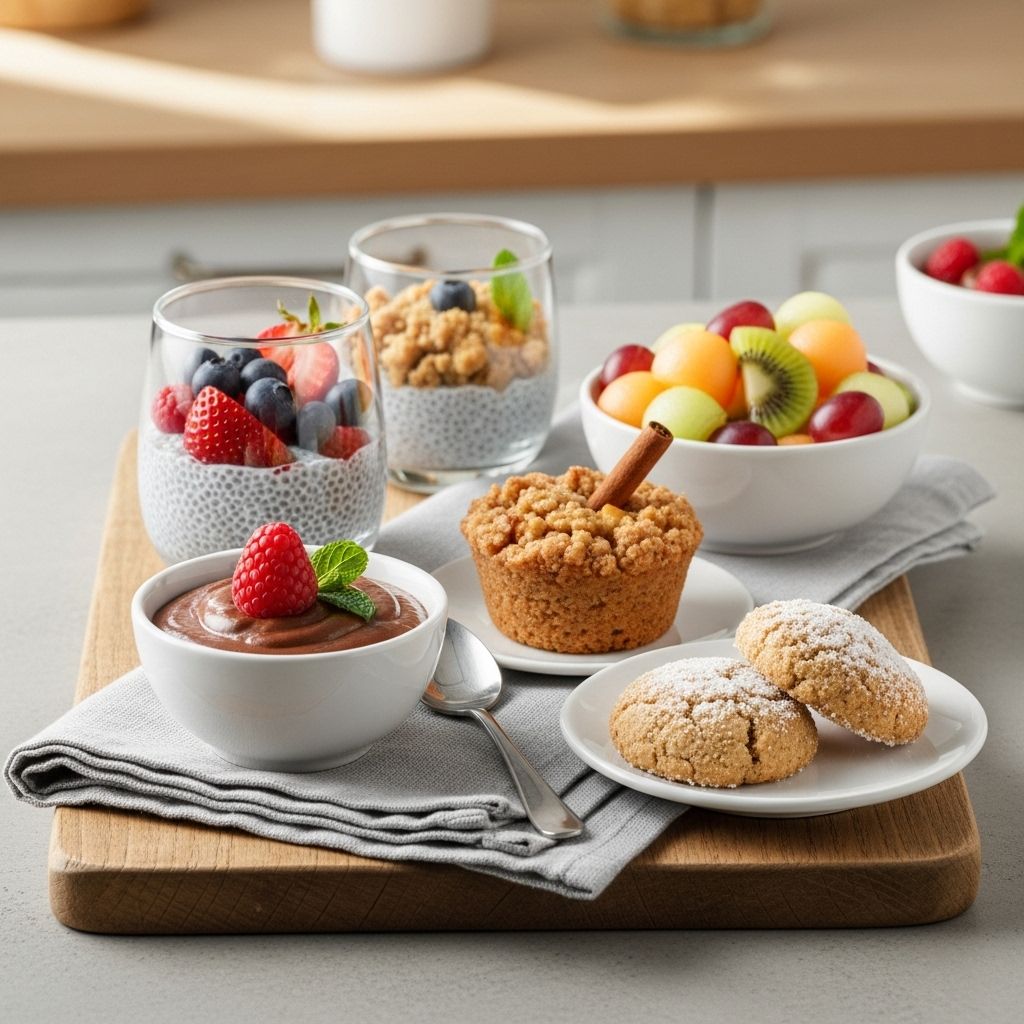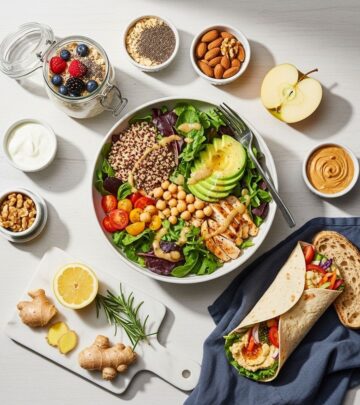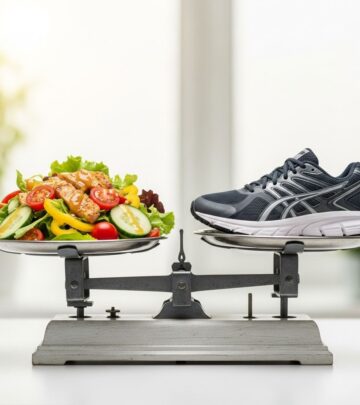Desserts and Sweets for Diabetics: How to Enjoy Treats Safely
Discover how those with diabetes can enjoy desserts—learn about smart choices, portion control, and healthy recipes for satisfying treats.

Living with diabetes doesn’t mean giving up on the pleasure of dessert. While it’s true that many traditional sweets can cause blood sugar spikes, careful ingredient choices, thoughtful portion control, and a proactive approach to meal planning make enjoying treats both possible and safe. This article explores how diabetics can indulge in their favorite sweets without compromising their health, presenting practical guidance, recipes, and answers to frequently asked questions.
Why Traditional Desserts Can Be Problematic
Traditional desserts—cakes, cookies, pastries, ice creams—are usually loaded with sugar, refined flour, and other high-carbohydrate ingredients. These components can quickly elevate blood sugar levels, which is risky for people with diabetes. Blood glucose spikes not only make diabetes harder to manage but may also raise the risk of complications like cardiovascular disease and nerve damage.
- Added sugars in desserts are quickly absorbed, causing significant elevations in blood glucose.
- Refined flours offer little fiber, meaning carbohydrates absorb fast.
- Dairy and fats in desserts can contribute additional calories and saturated fats, impacting overall health.
Can People with Diabetes Eat Dessert?
Yes, people with diabetes can enjoy dessert when they plan ahead and make mindful choices. It’s important to understand how carbohydrate content, portion size, and timing affect blood sugar—and to make swaps where possible for healthier ingredients.
- Moderation and balance are key: desserts can fit into meal plans when portioned and timed correctly.
- Carb counting is essential—track daily intake and adjust meals to allow for occasional sweets.
- Creative substitutes can transform a traditionally unhealthy dessert into a diabetes-friendly treat.
Smart Strategies for Enjoying Sweets
- Count Carbs: Always keep track of the carbohydrate content in your desserts. Adjust your intake for other meals and snacks as needed.
- Watch Portions: Smaller servings can satisfy a craving without causing high blood sugar. Serve dessert with or immediately after a meal to slow sugar absorption.
- Substitute Ingredients: Choose naturally sweet foods (like fruit), healthy flours (almond or whole grain), and plant-based sweeteners to reduce blood sugar impact.
What Makes a Dessert Diabetes-Friendly?
A diabetes-friendly dessert is designed to minimize blood sugar spikes by focusing on healthy, low-glycemic ingredients. These treats emphasize fiber, healthy fats, and less sugar, and are often portion-controlled to avoid overindulgence.
- Low or Zero-Sugar Sweeteners: Stevia, monk fruit, erythritol, and xylitol can sweeten recipes without spiking blood sugar.
- Whole Grains or Nut Flours: Choose flours with more fiber and lower glycemic load, such as almond flour or oat flour.
- Healthy Fats: Incorporate nuts, seeds, avocado, and nut butters for sustained energy and satiety.
- Fruit: Use berries or banana for natural sweetness and fiber.
- Portion Control: Small, satisfying servings reduce risk and help respect carbohydrate limits.
10 Great Diabetes-Friendly Desserts
- Greek Yogurt Parfaits with Fresh Berries: High-protein, fiber-rich, and easy to customize with cinnamon, nuts, or a dash of stevia.
- Almond Butter Chocolate Chip Cookies: Made with almond flour and a sugar substitute, offering healthy fats and protein.
- Banana Chocolate Chip Cookies: Use mashed banana and almond flour, with reduced sugar chocolate chips.
- Cranberry Stuffed Apples: Filled with chopped cranberries, walnuts, and cinnamon for natural sweetness and fiber.
- Mini Applesauce Muffins: Whole grain, moist, and just a touch of unsweetened applesauce for sweetness.
- Chocolate Avocado Pudding: Creamy, rich, and lower in sugar than traditional chocolate pudding.
- Baked Cinnamon Pears: Naturally sweet pears dusted with cinnamon and baked until tender.
- Strawberry Chia Seed Pudding: Packed with omega-3s and high fiber content for steady glucose.
- Oatmeal Apple Crisp: Made with oats, apples, nuts, and just a hint of natural sweetener.
- Nutty Coconut Energy Balls: Bites made from coconut, nuts, seeds, and a touch of dark chocolate, no added sugar.
Sample Recipe: Banana Chocolate Chip Cookies
| Ingredients | Instructions |
|
|
Baked Desserts for Diabetes: Cakes, Muffins, Cookies, and More
The aroma and comfort of freshly baked desserts can be adapted for diabetes management. By substituting healthy flours, limiting sugar, and incorporating fruits and nuts, traditional favorites become safe, satisfying choices.
- Baked Fruit: Stuffed apples, pears, and peaches can be filled with nuts, spices, and minimal sweetener.
- Whole Grain Muffins: Oat and nut-based muffins offer fiber and protein to prevent glucose spikes.
- Healthy Cookies: Use nut butters, almond flour, and dark chocolate for improved nutrition.
- Mini Cakes: Small cakes made with fruit puree and non-caloric sweeteners can be deliciously moist.
Sample Recipe: Cranberry Stuffed Apples
| Ingredients | Instructions |
|
|
Tips for Managing Sugar Cravings
- Choose fruit-based sweets or incorporate fruit into homemade desserts.
- Pair sweet treats with protein or healthy fats to slow absorption.
- Opt for dark chocolate instead of milk chocolate for reduced sugar.
- Use mashed bananas or unsweetened applesauce to sweeten recipes naturally.
- Enjoy treats after a balanced meal, improving satiety and slowing sugar digestion.
- Stay hydrated and avoid emotional eating—sometimes thirst mimics cravings.
Managing Desserts and Blood Sugar: A Table
| Dessert Type | Carbohydrate Impact | Recommended Tips |
|---|---|---|
| Typical Cake | High—refined sugar/flour | Make mini, use almond/oat flour, add fruit puree |
| Cookies | Moderate, depends on sweetener/flour | Choose nut butter, whole grain, sugar-free chips |
| Ice Cream | High (full sugar); moderate if non-dairy, sugar-free | Opt for Greek yogurt or fruit-based alternatives |
| Fruit Parfait | Low to moderate | Use plain Greek yogurt, fresh berries, sprinkle nuts |
| Energy Balls | Low if sugar-free, moderate if added sweeteners | Mix nuts, seeds, coconut, unsweetened cocoa |
Frequently Asked Questions (FAQs)
Q: Are all desserts high in sugar off-limits for diabetics?
A: No, moderating portion size and choosing healthier substitutes—like stevia, monk fruit, or fruit puree—makes many desserts a safe option when planned into your diet.
Q: What are some natural sweeteners I can use in diabetic desserts?
A: Stevia, monk fruit extract, erythritol, and xylitol are popular non-nutritive sweeteners. Applesauce and mashed bananas can also add natural sweetness, though they still contribute some sugar and carbs.
Q: Should I avoid all carbohydrates in desserts?
A: Not necessarily. The focus should be on choosing complex carbohydrates and fiber-rich ingredients, watching portion sizes, and balancing carb intake with your diabetes management plan.
Q: Are there ready-made products suitable for diabetics?
A: Yes, many brands offer sugar-free or low-carb treats—however, always read nutrition labels and moderate consumption since artificial sweeteners can sometimes cause digestive issues.
Q: How often can people with diabetes enjoy dessert?
A: Frequency depends on overall meal planning, activity level, and blood sugar control. Having dessert for special occasions or as a carefully incorporated treat is usually safe when paired with moderation and awareness.
Conclusion: Enjoy Sweets Sensibly
Diabetes does not mean a lifetime ban on sweets. By adapting favorite recipes, choosing wholesome ingredients, and employing mindful strategies, dessert can be a safe, delicious component of your diet. Remember: prioritize whole ingredients, keep portions controlled, and integrate treats into an overall plan that supports blood sugar stability. If in doubt, consult a registered dietitian for personalized guidance.
Read full bio of Sneha Tete












